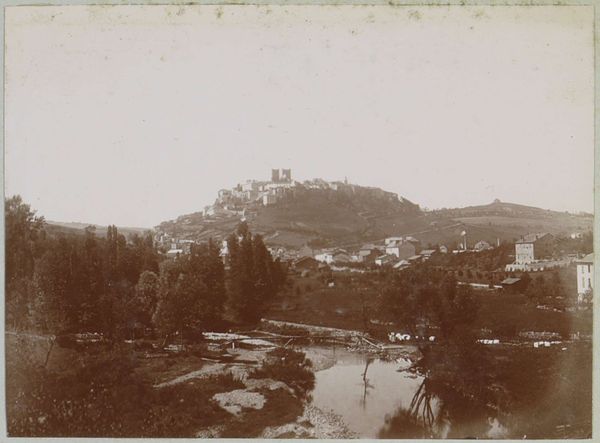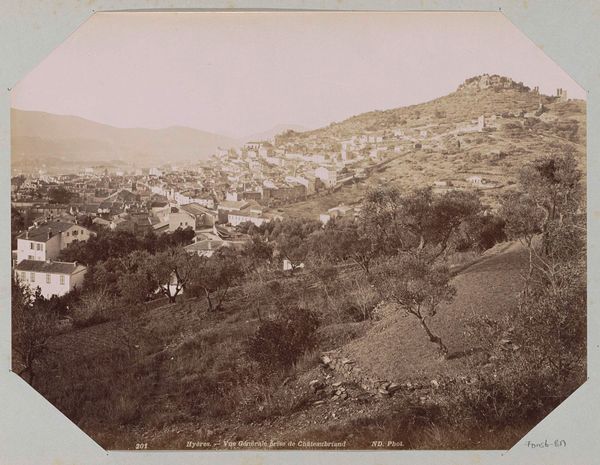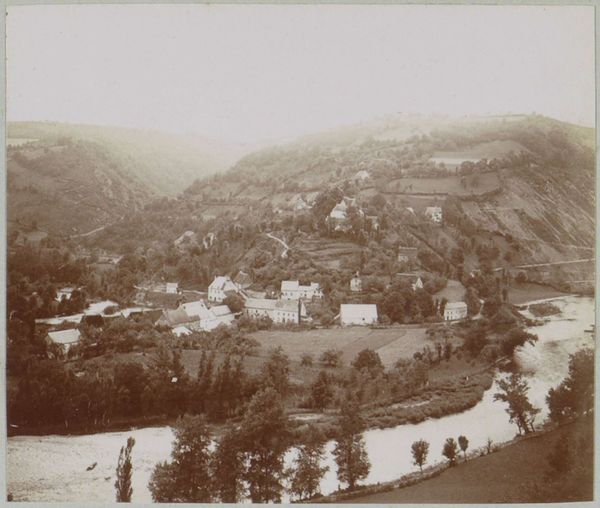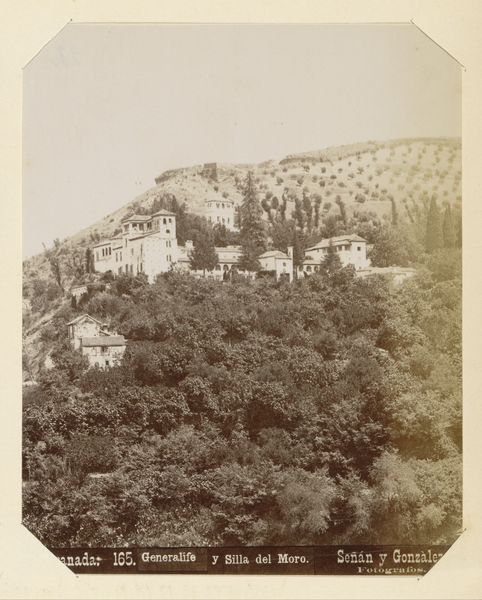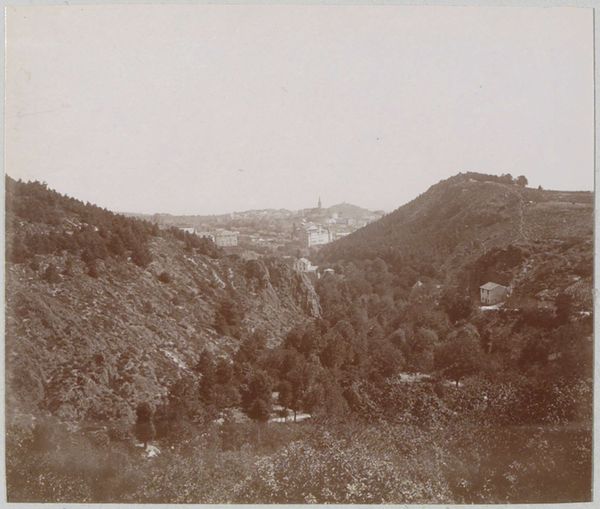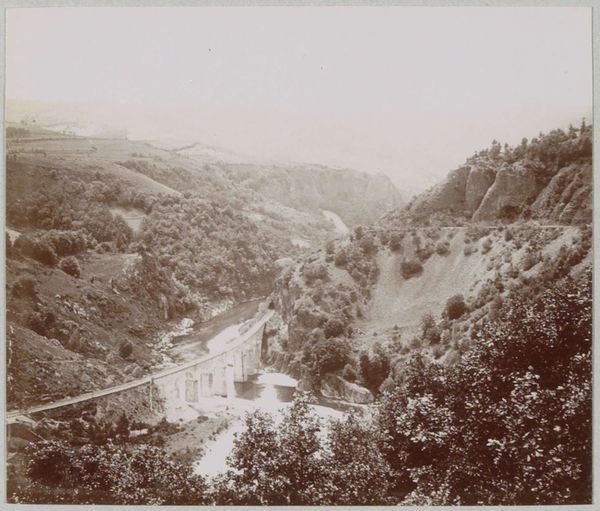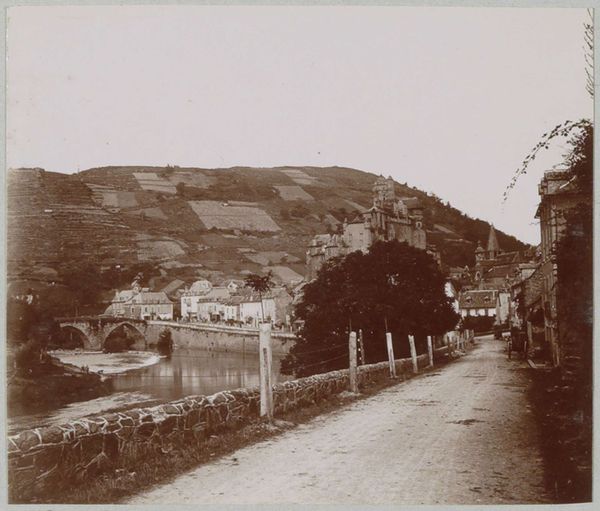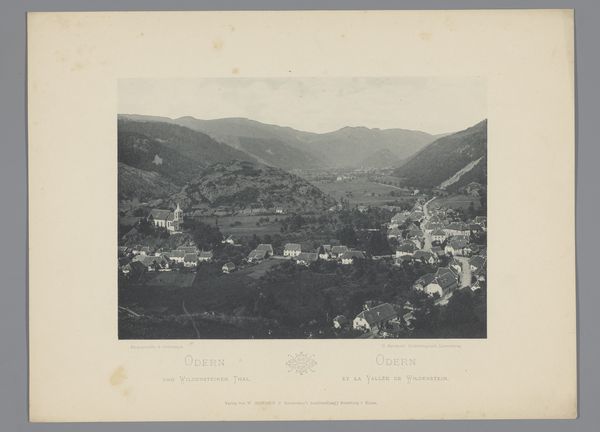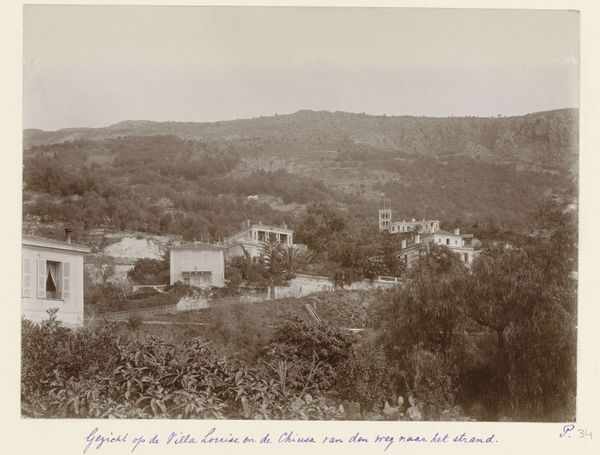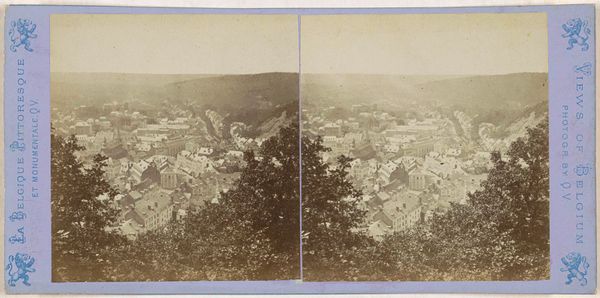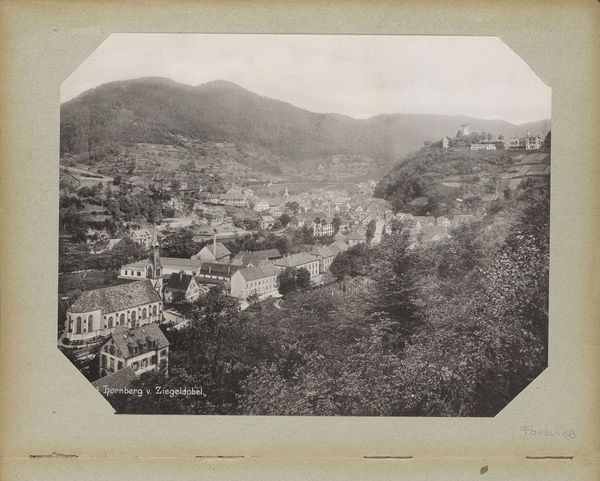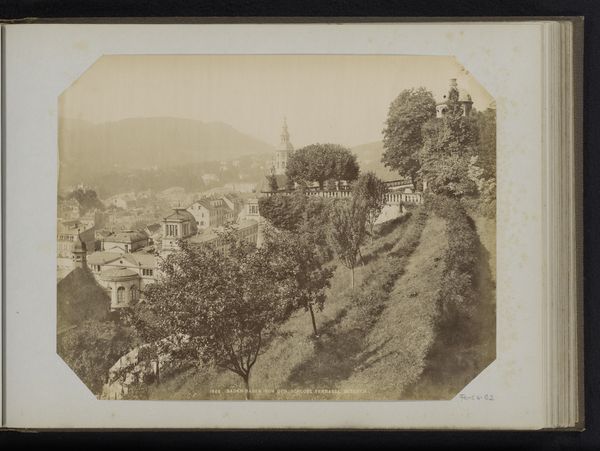
photography
#
water colours
#
landscape
#
photography
#
orientalism
#
watercolor
Dimensions: height 125 mm, width 170 mm
Copyright: Rijks Museum: Open Domain
Curator: It presents such a captivating sense of place, almost dreamy. The hazy light and layered landscape create a palpable atmosphere. Editor: Indeed. We’re looking at “Alhambra gezien vanaf de Camino del Avellano”, a photograph dating from somewhere between 1860 and 1900. It’s attributed to F. Linares. Curator: It's hard to ignore how the lens frames this almost staged view. Look at how much depth is happening! The foreground is full of these dense leafy textures. This then yields to glimpses of buildings snaking along the hilltop into that ghostly view of Granada itself. All in tones of sepia—such subtle, delicate materiality. It whispers rather than shouts, don't you think? Editor: Yes, and consider the burgeoning interest in the 'Orient' at this time, shaping its reception. Works such as these catered to a public fascination with exotic, often romanticized views of distant lands. The medium, photography, became a powerful tool in shaping that narrative. This image isn’t just about the place but also about how the place was consumed visually. Curator: Right, and within the print itself we also should consider this “place”. Granada would’ve had to adapt materially and architecturally as its cultural and social functions changed with shifts in power, all affecting that cultural vision or imagery you point to! The buildings aren't just stone. Editor: Precisely. One has to also recognize the power structures that dictate the circulation of such imagery; consider its influence on popular taste through international exhibitions, travel publications, and how that impacted and further propagated socio-political biases. How were the processes used and adapted based on who controlled the narrative and access to labor and material goods? Curator: Definitely gives me much more to reflect on, specifically as the way people understand landscapes becomes increasingly a conversation about extraction and materiality as well. Editor: Absolutely, these historical lenses help frame current dialogues on place, representation, and the complex interplay of art, society, and the historical gaze.
Comments
No comments
Be the first to comment and join the conversation on the ultimate creative platform.

